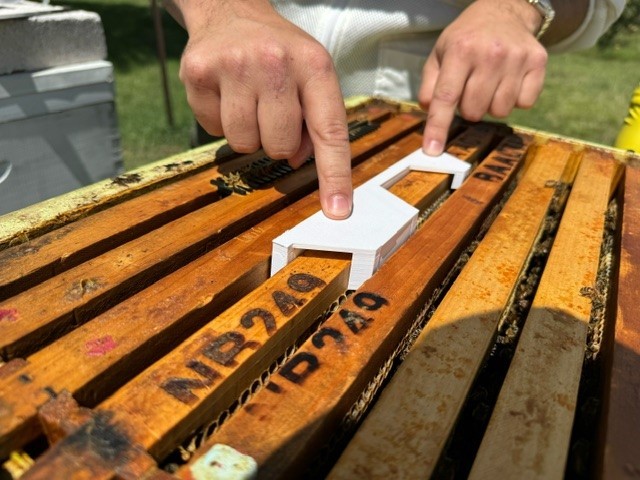Catalysing Australia’s Biosecurity (CAB)
26 March 2024In response to the recent varroa mite outbreak, the Catalysing Australia’s Biosecurity (CAB) initiative is leading a cutting-edge partnership between the Australian Capital Territory Government, Queensland Department of Agriculture and […]

In response to the recent varroa mite outbreak, the Catalysing Australia’s Biosecurity (CAB) initiative is leading a cutting-edge partnership between the Australian Capital Territory Government, Queensland Department of Agriculture and Fisheries, University of Canberra and CSIRO, to detect varroa mites – a danger to honeybees across the globe.
A new low-cost technology, BeeRight, has been shown to detect varroa mites in beehives in New Zealand and could be the solution to slowing the spread of this destructive pest.
If varroa mites establish in Australia’s honeybee population, pollination activities would be significantly reduced, posing an extreme risk to Australia’s food security.
BeeRight technology is an Internet of Things solution that can be set up in any hive without damaging the hive or bothering the bees. The technology has the potential to monitor for:
- beehive activity
- colony strength
- queen status
- productivity
- swarming status
- hive location
- presence of disease
- when to treat hives.
Two pilot programs targeting varroa mite, and co-funded to the tune of $130,000 under the Catalysing Australia’s Biosecurity (CAB) initiative, are due to begin in the coming months.
The programs come as the national management group for varroa destructor, which includes governments and industries, endorsed plans to move from an eradication response to a national transition to management in February.
The ACT pilot is a collaboration between the Department of Agriculture, Fisheries and Forestry (DAFF), CSIRO, the ACT Government and University of Canberra (UC). It will use a citizen science approach to trial Vimana Tech’s BeeRight technology and use environmental DNA (eDNA) with up to 30 local backyard beekeepers/hobbyists in the ACT region.
The NSW pilot is a collaboration between DAFF, CSIRO, Queensland’s Department of Agriculture and Fisheries and UC. It will also use the BeeRight technology and eDNA on known hives infected with varroa mite in NSW. There will also be a citizen science component like the ACT approach.
First Assistant Secretary of Biosecurity Strategy and Reform Bronwen Jaggers said the pilots provided a unique opportunity to test the technology and how it could best be used in urban and peri-urban areas.
For more information email innovationpilots@aff.gov.au.
